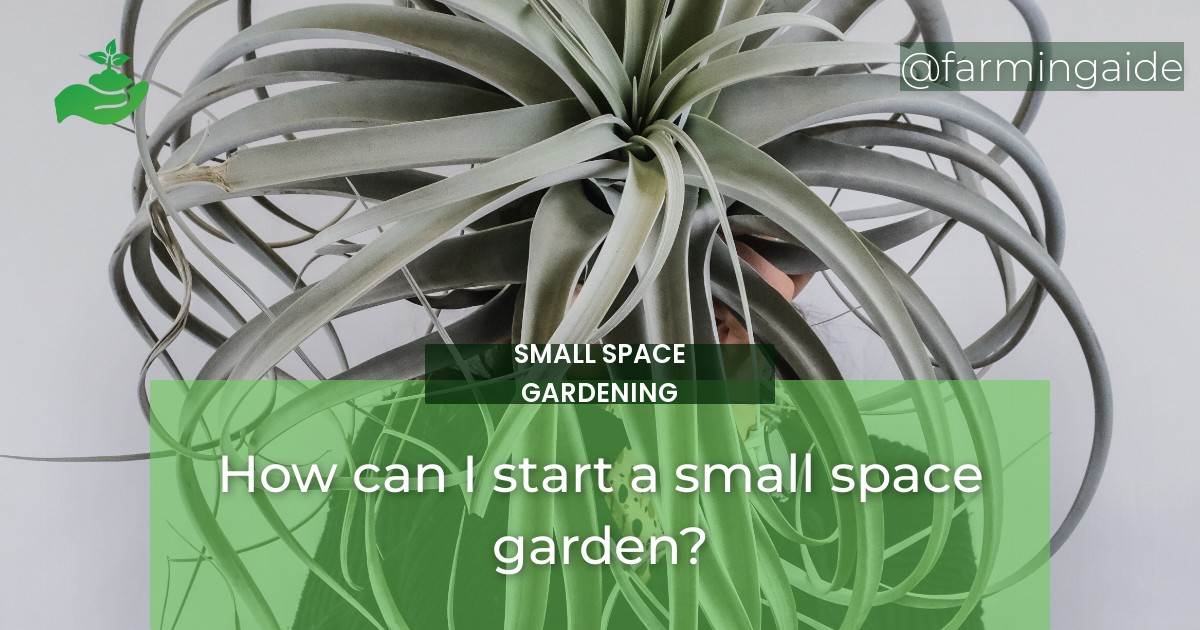Starting a small space garden is a great way to enjoy fresh produce without a backyard. With limited space, you can still set up a garden that yields healthy vegetables and herbs. This article outlines the steps to follow when beginning a garden in small areas, including how to select the right plants, prepare the garden, care for your plants, troubleshoot issues, and harvest and enjoy the fruits of your labor.
Determine the Type of Small Space Garden to Create
Assess Your Space
Before you start planting, you need to assess your space. Take a look at the area you have available and the amount of sunlight it receives. Consider the following:
- Do you have a balcony, patio, or windowsill?
- How many hours of sunlight does your space receive each day?
- Is your space windy or sheltered?
Decide on the Type of Garden
Once you’ve assessed your space, you need to decide on the type of garden you want to create. Here are a few options:
- Vertical Garden – Ideal for small spaces, a vertical garden can be created using a trellis or hanging baskets.
- Container Garden – Grow plants in pots or containers that can be moved around as needed.
- Window Garden – Utilize a windowsill or window box to grow herbs and small vegetables.
- Hydroponic Garden – Use a hydroponic system to grow plants in water instead of soil.
Choose the Right Plants for Your Small Space Garden
Consider Your Climate
When selecting plants for your small space garden, it’s important to consider your climate. Choose plants that are suited for your region and will thrive in the amount of sunlight your space receives.
Choose the Right Container
The right container is essential for a successful small space garden. Consider the following when choosing a container:
- Size – Choose a container that is the right size for your plant.
- Drainage – Make sure your container has good drainage to prevent overwatering.
- Material – Consider the material of the container. Clay and terracotta pots are porous and can dry out quickly, while plastic containers are lightweight and easy to move.
Select Plants that Fit Your Space
Choose plants that will fit your space and won’t overcrowd your garden. Look for compact varieties of vegetables and herbs that grow well in containers or small spaces, such as cherry tomatoes, lettuce, and basil.
ALSO READ
Prepare Your Small Space Garden
Select the Right Soil
Choosing the right soil is essential for a healthy small space garden. Look for a high-quality potting mix that is specifically designed for container gardening.
Add Fertilizer or Compost
To keep your plants healthy and thriving, add fertilizer or compost to your soil. You can also use natural alternatives like coffee grounds or eggshells.
Set Up Your Garden
Once you have your plants and soil, it’s time to set up your garden. Arrange your containers in a way that maximizes sunlight and ensures proper drainage.
Care for Your Small Space Garden
Water Your Garden Regularly
Regular watering is essential for a healthy small space garden. Monitor the soil and make sure it stays moist, but not waterlogged.
Provide Adequate Sunlight
Most vegetable and herb plants require at least six hours of sunlight each day. Make sure your garden is getting enough sun, and consider adding grow lights if necessary.
Prune Your Plants
Regular pruning will help keep your plants healthy and productive. Remove any dead or diseased leaves, and trim back any overgrowth.
ALSO READ
Troubleshoot Issues with Your Small Space Garden
Identify Common Problems
Common problems with small space gardens include pests, diseases, and overwatering. Look for signs of these issues, such as yellowing leaves, mold, or insect infestations.
Take Steps to Control Pests and Diseases
If you notice pests or diseases in your garden, take steps to control them. Use natural methods like neem oil or insecticidal soap, or try companion planting to deter pests.
Harvest and Enjoy Your Small Space Garden
Know When to Harvest
Harvest your vegetables and herbs when they are ripe and ready to eat. Look for signs like color, size, and texture to determine when your plants are ready to be harvested.
Preserve Your Garden’s Bounty
If you have too much produce to eat at once, consider preserving it for later. Options include canning, freezing, and pickling.
Enjoy the Fruits of Your Labor
Finally, enjoy the fruits of your labor! Use your fresh produce in your favorite recipes, or share it with friends and family.
Conclusion
Starting a small space garden is a fun and rewarding way to enjoy fresh produce. By following these steps, you can set up a garden in limited space, choose the right plants, prepare the soil, care for your plants, troubleshoot issues, and harvest and enjoy the fruits of your labor.


